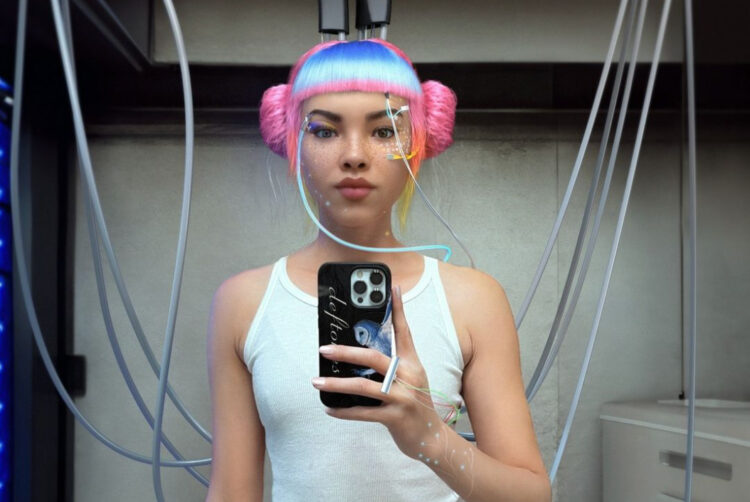The advent of AI influencers: What brands need to know

Opinion
As AI becomes more prominent, marketers must be clear about their objectives in order to decide how best to utilise their influencer campaigns.
Influencers have become integral to marketing strategies. According to Goldman Sachs, the creator economy is estimated to double in size by 2027, valued at around $480bn. With AI continuing to make its mark in advertising, virtual influencers will certainly play a large role in its growth.
But these virtual influencers have not come without scrutiny. Levi’s faced backlash earlier this year for using AI models in an attempt to promote diversity, with critics calling the move “problematic” and alienating its customers in the process.
While research from Statista found that 63% of professionals are planning on using AI for influencing marketing in upcoming years, there still seems to be blurred lines between where human beings are needed and where they should be supplemented with AI.
Navigating this requires brands to understand their objective and implement the right influencer strategy in order to reap the rewards.
It’s just human nature
If the purpose is to portray authentic experiences and personable endorsements that embody “humanness” at the core, then human influencers are the way to go. They can achieve lifestyle-based objectives that tap into real emotions and experiences.
Luxury brands often use influencers who embody a certain lifestyle, highlighting the emotional allure of their products.
Travel is another sector where experiences can only really be human. Travel companies use influencers to showcase experiences and trips that ignite desires for adventure and escape. This isn’t something a virtual influencer can replicate.
Similarly, in fitness and wellbeing, where personal transformation and emotional connection are central, only human influencers can resonate deeply with audiences. Virtual influencers can’t match the nuanced authenticity and relatability that a human influencer offers through shared lived experiences, as well as the stages of transformation experienced by one’s body.
Sticking with human influencers where human emotions and experiences are at the core of your marketing objective can help avoid controversy when it comes to deciding between real people and AI.
The case for virtual influencers
However, there are some objectives that can only be achieved through virtual influencers — so understanding this is key to a successful influencer marketing campaign.
Around 52.8% of marketers believe virtual influencers have a prominent impact on the future of marketing — this is understandable given the number of followers some have accumulated.
One of the first virtual influencers on the scene, Lil Miquela, has 2.5m followers on Instagram, while Lu do Magalu has an impressive 7.1m Instagram followers and has even featured on the cover of Vogue Brasil.
Virtual influencers can achieve things that humans alone simply can’t. They’re able to analyse large datasets of consumer behaviour and preferences, optimising their content to what resonates with specific demographics or subcultures.
Lil Miquela has worked with brands including Calvin Klein and Samsung, leveraging her ability to appeal to Gen Z and millennial audiences. These audiences are heavily driven by community norms like inclusivity, social justice and sustainability. Lil Miquela’s content, which includes collaborations with fashion designers and socially conscious posts, is shaped by analysing vast amounts of data from these communities to stay on trend.
AI influencers are also effective where audiences need practical advice rather than human emotions. Lil Miquela’s collaboration with Prada during Milan Fashion Week 2018 provided a highly curated experience that focused on technical aspects. They shared exclusive content and product highlights that detailed the materials, craftsmanship and design elements of the collection.
This approach catered to fashion enthusiasts who were more interested in the tangible aspects of the collection like innovative designs, styling and technical brilliance of the garments rather than a human ’s emotional reaction or personal experience.
Ikea Japan’s digital representative Imma, who blends futuristic visuals with minimalist interior design to cater to Japan’s tech-forward audience, is another example of successful AI influencer use.
These influencers provide round-the-clock engagement, can handle multiple content streams and are also immune to scandals or controversies. Moreover, they can be more cost-effective in the long term as brands avoid the unpredictability and rising fees for human influencers.
For brands that need to maintain a precise tone and aesthetic, virtual influencers can follow strict brand guidelines without the risk of misrepresenting or straying from the messaging.
With 65.5% female audiences interacting with virtual influencer content, it’s hard to make many cases against their impact.
Balancing trust and technology
Perceived trustworthiness is one of the biggest barriers to virtual influencers. Consumers may be sceptical of endorsements from AI influencers, particularly in sectors where trust and authenticity are vital.
While AI influencers are engaging, they lack the emotional connection that human influencers naturally provide. Brands need to find the right balance, using virtual influencers where functional signals are more prevalent and human influencers for deeper emotional engagement.
That’s why it’s important to think about your objective first. The challenge for brands lies in leveraging each effectively, balancing emotion and precision to achieve lasting connections and impactful results.
 Lea Karam is consulting director at Behave
Lea Karam is consulting director at Behave




